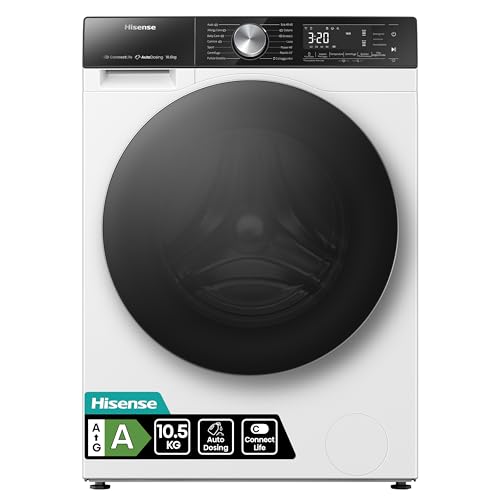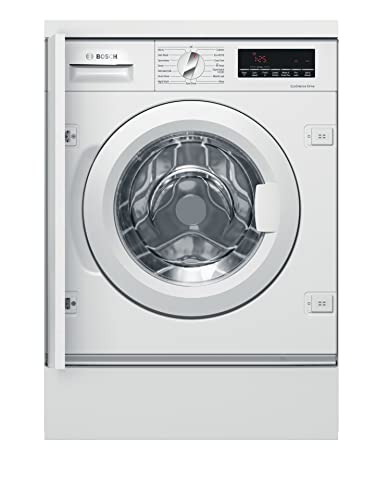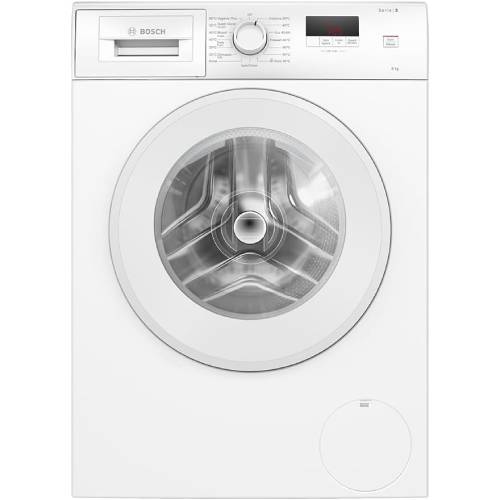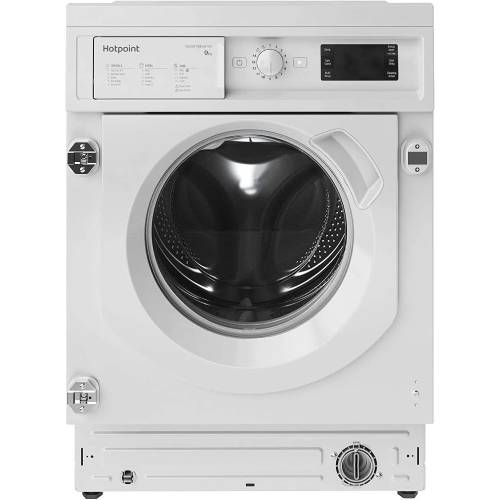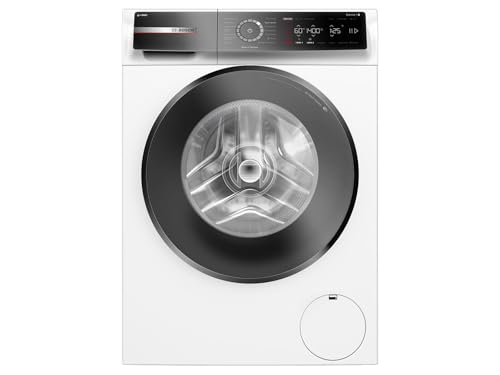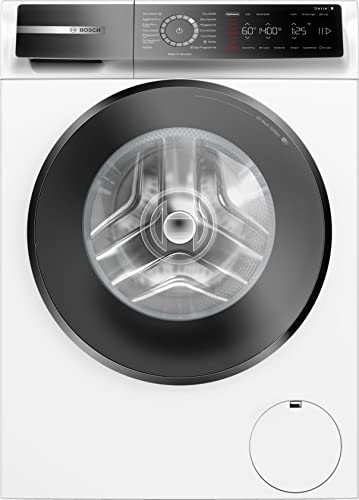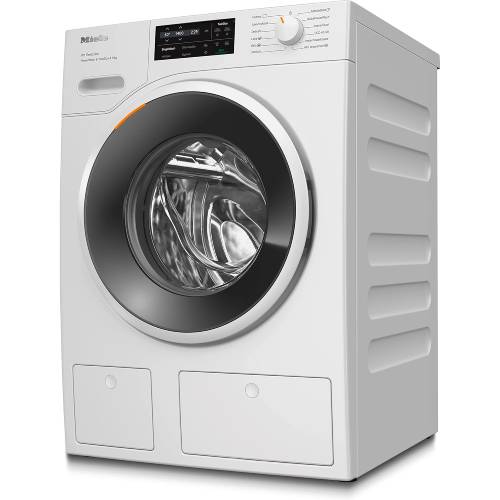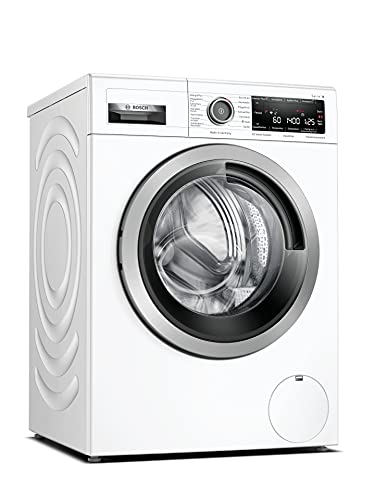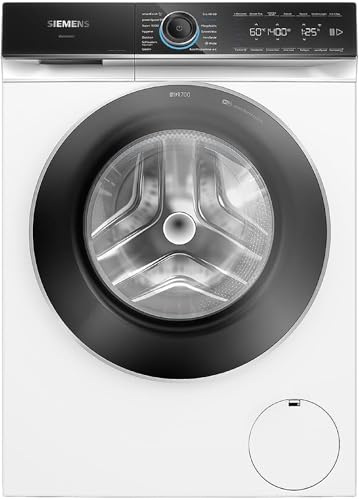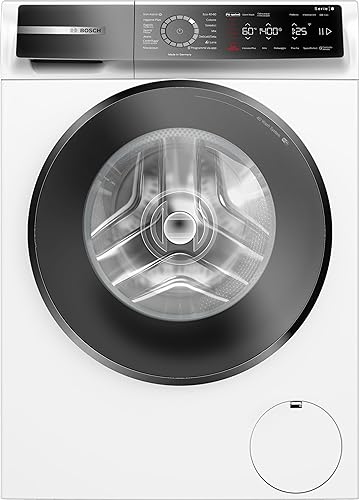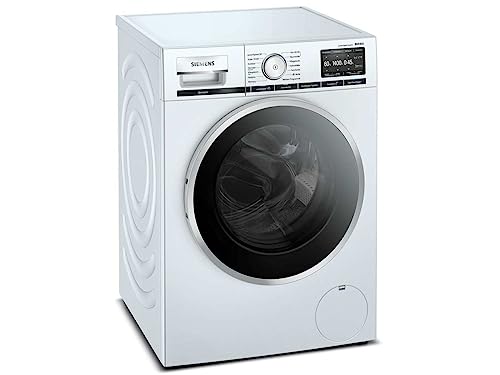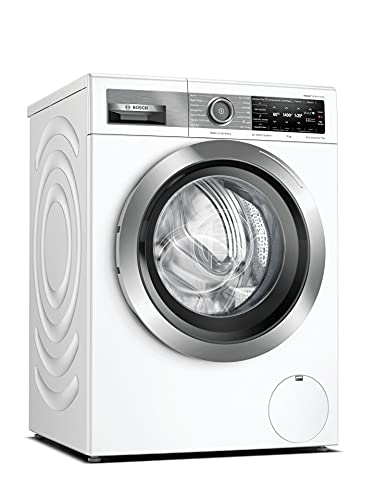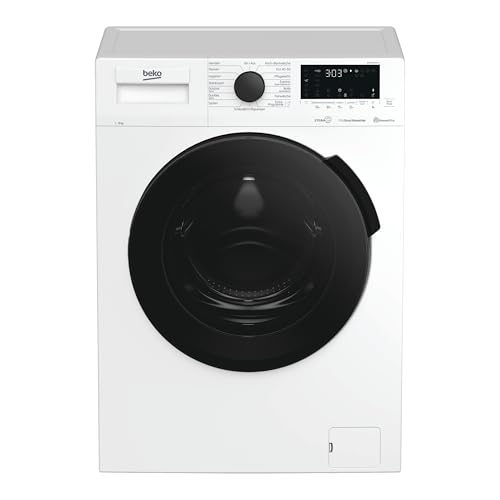What is the decibel level of a quiet washing machine?
A quiet washing machine produces a spin noise level of 72 dB or less and a washing noise level of 52 dB or less. Only 36% of washing machines fall into this category. Super-quiet washing machines have a spin noise level of 70 dB or less and a washing noise level of 50 dB or less, with only 15% of washing machines qualifying as super-quiet. You can find the noise level on the energy label of each washing machine.
Spin noise level is the noise during the spin phase, which is the loudest part of the wash cycle. It ranges from 64 dB to 85 dB, with an average of 75 dB. The scale is logarithmic, so small increases in dB represent significant increases in noise. Noise levels can be categorized as follows:
- 70 dB or lower is super quiet (10% of washing machines): equivalent to the noise in a busy restaurant or noisy office with ringing phones.
- 71-72 dB is considered quiet (26% of washing machines): comparable to a running shower or a car traveling at highway speeds.
- 73-76 dB is average (35% of washing machines): similar to a loud radio or TV in the home or a flushing toilet.
- 77 dB or more is loud (29% of washing machines): similar to an alarm clock or a garbage truck compacting trash.
Wash noise level is the noise during the wash phase (measured during the ECO 40-60 program), which is usually quieter than the spin phase. It ranges from 45 dB to 62 dB, with an average of about 53 dB. The categories for washing noise are as follows:
- 50 dB or lower is super quiet (15% of washing machines): equivalent to a quiet library or whispered conversation.
- 51-52 dB is considered quiet (21% of washing machines): comparable to a quiet office or light rain
- 53-56 dB is average (37% of washing machines): similar to normal household conversation
- 57 dB or more is loud (28% of washing machines): comparable to normal office noise where people talk or larger air conditioners.
The following washing machines are the quietest.
- Bosch WIW24342EU Serie 6 (Spin noise level: 66 dB; Capacity: 8 kg)
- Bosch WIW28502GB Series 8 (Spin noise level: 66 dB; Capacity: 8 kg)
- Hotpoint BI WMHG 91484 (Spin noise level: 70 dB; Capacity: 9 kg)
What does the noise emission class mean in washing machines?
Noise emission class in washing machines refers to how loud a machine is, expressed in letters from A to D. It is based on the spin noise level and categorized as follows:
- Class A: 72 dB or less (37% of all washing machines)
- Class B: 73-76 dB (35% of all washing machines)
- Class C: 77-80 dB (26% of all washing machines)
- Class D: 81 dB or more (3% of all washing machines)
Most washing machines fall under class A, followed closely by class B.
What features make a washing machine quiet?
The following features contribute to quieter operation of washing machines.
- Inverter motor: inverter motors operate efficiently and reduce noise by controlling motor speed. 74% of all washing machines (and 95% of all quiet models) have an inverter motor.
- Load balancing system: This system distributes laundry evenly inside the drum, reducing vibrations during the spin cycle. 81% of washing machines feature a load balancing system.
- Special drum design: A well-designed drum reduces noise by minimizing friction and improving laundry distribution. 46% of washing machines (and 88% of all quiet models) include this feature.
- Vibration reduction: washing machines use shock absorbers, stabilizing systems, anti-vibration pads, or feet to reduce noise and vibration.
- Insulation: Soundproofing materials like foam or rubber around the motor and drum help contain noise.
- Spin speed control: Gradual acceleration and deceleration of the spin cycle further reduce noise.
- Quiet cycles: These cycles are specifically designed to operate at lower noise levels.
How much do quiet washing machines cost?
Quiet washing machines usually cost between £300 and £1360, with an average price of around £580 (which is £190 more than the market average). The higher price is due to additional features such as an inverter motor or a special drum design.
Due to the higher price, quiet washing machines generally have a lower quality-price ratio than the average washing machine on the market (6.2 vs. 7.1 points).
The following chart illustrates how prices vary among quiet washing machines.
[vertical-chart-35216837854225466]
Which washing machine brands are the quietest?
The following washing machines brands the quietest.
- Hoover (Average spin noise level: 79 dB)
- Whirlpool (Average spin noise level: 78 dB)
- Candy (Average spin noise level: 78 dB)
The chart below shows how quiet washing machine brands compare in overall score.
[horizontal-chart-41344244539627996]
What to consider while choosing the best quiet washing machine?
When choosing the best quiet washing machine, consider factors like capacity, drum volume, energy consumption, water use, and motor type, spin-drying efficiency and available washing programs and features.
Are front-load washing machines quieter than top-load ones?
Front-load washing machines are quieter than top-load models. On average, front-load washing machines produce about 4 dB less noise during the spin phase (78 dB vs. 74 dB) and 7 dB less during the wash phase (60 dB vs. 53 dB). Front-load models also generally score higher overall, with an average overall score of 7.1 compared to 6.1 for top-load models. This means that front-loaders not only operate more quietly but also have better overall performance.
Front-load washing machines have the following advantages compared to top-load washing machines:
- Better price-to-quality ratio: Front-load washing machines generally cost more but still have a better price-to-quality ratio than top-load models.
- Higher user ratings: Front-load washing machines have an average user rating of 8.1, compared to 7.9 for top-load washing machines.
- Larger capacità: Front-load washing machines have an average capacity of 8 kg and a drum volume of 59 liters, compared to 7 kg and 42 liters for top-load models.
- Greater energy efficiency: Front-load washing machines consume 54 kWh per 100 cycles on average, while top-load washing machines consume 65.5 kWh. Additionally, 44% of front-load models have an energy class A rating, whereas no top-load models achieve it.
- More inverter motors: 80% of front-loading washing machines are equipped with inverter motors, compared to only 37% of top-loading models.
- Longer motor warranty: Front-load washing machines usually come with a 10-year motor warranty, while top-load washing machines generally offer a 2-5-year warranty.
- Better drying efficiency: 66% of front-load washing machines can reach a maximum spin speed of 1400 RPM, while only 17% of top-load models can do the same.
- More advanced features: Front-loading washing machines are more likely to include features such as steam technology, self-cleaning, automatic drawer cleaning, Wi-Fi and AI technology.
Top-load washing machines have the following advantages compared to front-load washing machines:
- Lower cost: Top-load washing machines are about £40 cheaper than front-load washing machines (average £360 vs. £400).
- Lower water usage: Top-load washing machines use about 4 liters less water per cycle (43 L vs. 47 L) compared to front-load washing machines, although this is influenced by their smaller capacity.
- Shorter ECO Cycle: The ECO Cycle in top-load washing machines takes about 13 minutes less than in front-load washing machines (205 min vs. 218 min).
- Lighter weight and smaller size: Top-load washing machines are about 11 kg lighter (56 kg vs. 67 kg) and occupy about 25% less space (0.21 m³ vs. 0.28 m³) than front -load washing machines.
- Easier maintenance: Top-load washing machines are less prone to mold and easier to unload.
The breakdown of quiet washing machines by loading type is displayed in the following chart.
[pie-chart-29140129499922459]
What is the capacity of quiet washing machines?
Quiet washing machines typically have capacities ranging from 7 to 12 kg. Most quiet washing machines have a capacity of 9 kg (47%), followed by 8 kg models (29%). Larger capacity washing machines tend to produce less noise; for example, 7 kg washing machines average 76 dB, 8 kg washing machines average 74 dB, and 9 kg washing machines produce about 72 dB during the spin cycle.
Drum volumes in these washing machines usually range from 52 to 65 liters, with the average being 61 liters, which is 3 liters more than the market average of 58 liters.
Quiet washing machines generally have a standard size, occupying around 0.28 m³. They range in depth from 50 to 66 cm, with an average depth of 55 cm. However, slim quiet washing machines are not available.
Quiet washing machine capacity ranges are illustrated in the chart that follows.
[pie-chart-22153122062119982]
How energy-efficient are quiet washing machines?
Quiet washing machines are generally energy-efficient. Most quiet washing machines belong to energy class A (53%), followed by class B (22%), class C (15%), and class D (10%). For comparison, 39% of all washing machines in the overall market belong to class A. Quiet washing machines consume between 40 and 70 kWh per 100 cycles, with an average of 51 kWh (is 4 kWh less than the market average of 55 kWh).
Energy consumption generally aligns with energy classes: A class typically uses under 49 kWh per 100 cycles, and B class under 55 kWh. However, this correlation can vary slightly depending on the machine's capacity.
There is a modest correlation (0.29) between spin noise levels and energy consumption, meaning quieter washing machines tend to use less energy. This is often because these washing machines feature advanced technologies, such as inverter motors, which also improve energy efficiency.
In terms of water usage, quiet washing machines use between 40 to 70 liters per cycle, with an average of 48 liters (2 liters more than the market average of 46 liters).
What is the spin-drying efficiency class of quiet washing machines?
Quiet washing machines usually have a spin-drying efficiency class between A and C, with class B being the most common (93% of quiet washing machines). Spin-drying efficiency class refers to how well a washing machine removes moisture from clothes during the spin cycle.
Spin-drying efficiency class is closely related to the maximum spin speed of the washing machine. Maximum spin speed varies from 1000 to 1600 RPM in quiet washing machines, with 1400 RPM being the most common (80% of washing machines), followed by 1200 RPM (15%).
Higher spin speeds generally result in lower moisture retention: at 1600 RPM, clothes retain about 43% humidity; at 1400 RPM, about 50%; and at 1200 RPM, about 53%. However, washing machines tend to get noisier as the spin speed increases because the drum rotates faster, creating more friction and vibration. Modern washing machines often include features like improved insulation, shock absorbers, and balance systems to reduce noise even at higher spin speeds.
If you often wash delicate clothes, you should also consider the minimum spin speed. Delicate fabrics require lower speeds to prevent damage. The minimum spin speed in 8 kg quiet washing machines ranges from 400 to 800 RPM (with 80% of them capable of reaching the lowest possible spin speed of 400 RPM).
How many washing programs do quiet washing machines have?
Quiet washing machines usually have 10 to 23 washing programs and 1 to 2 Fast cycles that take less than an hour. These washing programs do not differ much from those in other washing machines. The differences between models lie in the specialized cycles they have.
The most common specialized washing programs in quiet washing machines are as follows:
- Pre-wash cycle (85%)
- Anti-stain cycle (84%)
- Hygiene cycle (69%)
- Allergen cycle (80%)
- Outdoor/sport cycle (73%)
- Jeans cycle (48%)
- Shirt cycle (49%)
- Duvet cycle (36%)
Quiet washing machines also often include the washing functions such as anti-crease function (46% of them), rinse-hold function (69%), extra-rinse function (92%) or extra-fast function (58%).
What are some common features of quiet washing machines?
Quiet washing machines usually have between 6 and 18 advanced features, with an average of 12 (2 more than the market average). These features often contribute to their quieter operation.
Common features in quiet washing machines include an inverter motor, a load balancing system, and a specially designed drum. These features significantly reduce noise during operation.
Other features to consider include foam control systems, water stop systems, laundry detection systems, pre-mix technology, automatic dosing systems, automatic drawer cleaning, steam technology, and Wi-Fi or AI integration. While these do not directly affect noise, they enhance the overall washing experience and performance.

